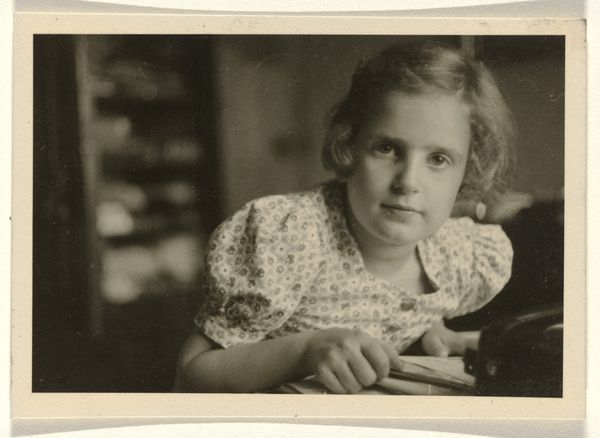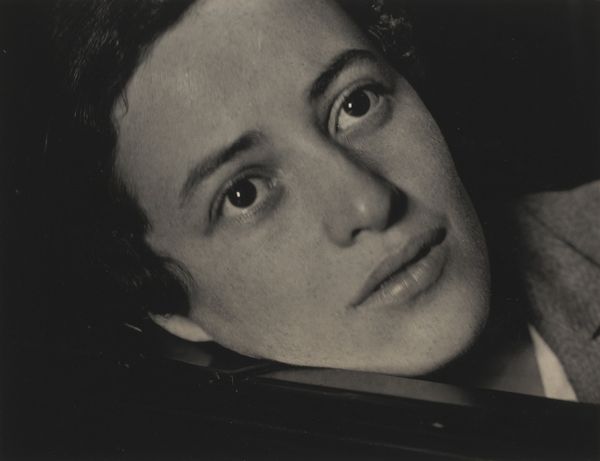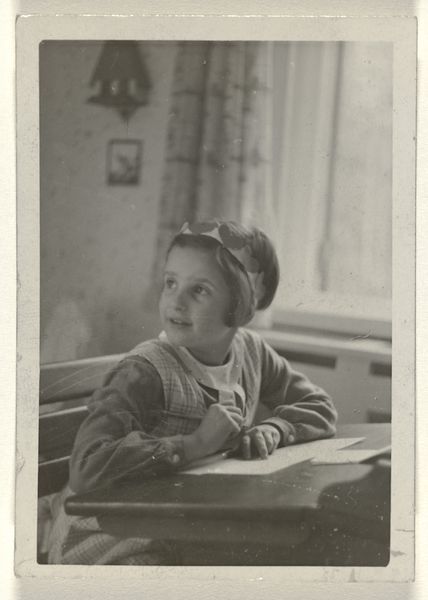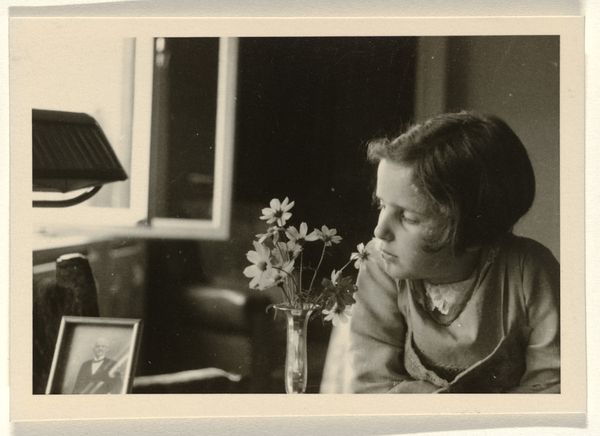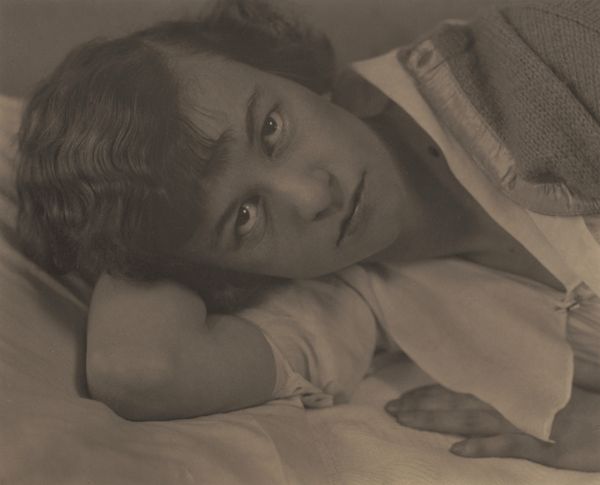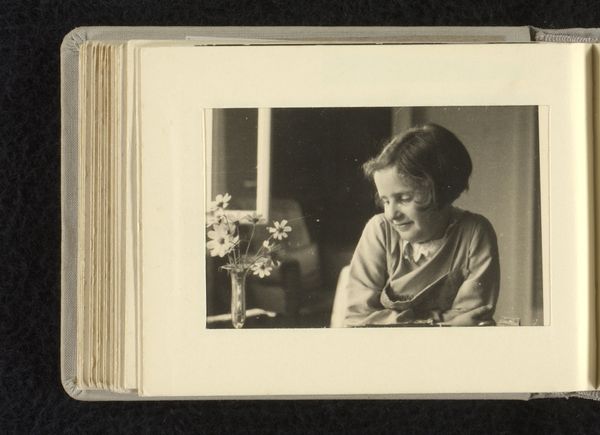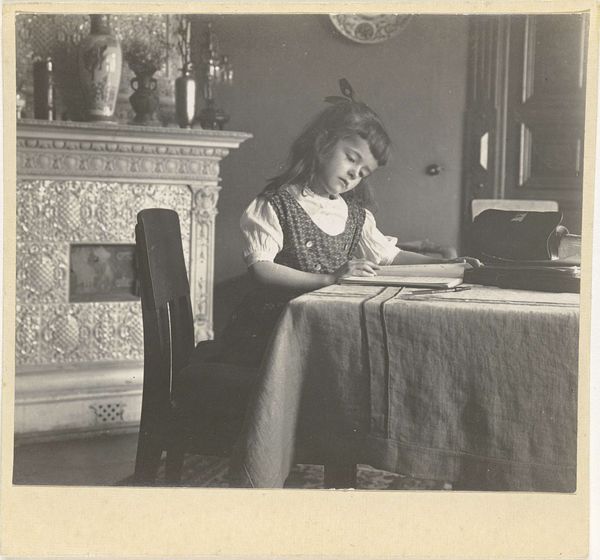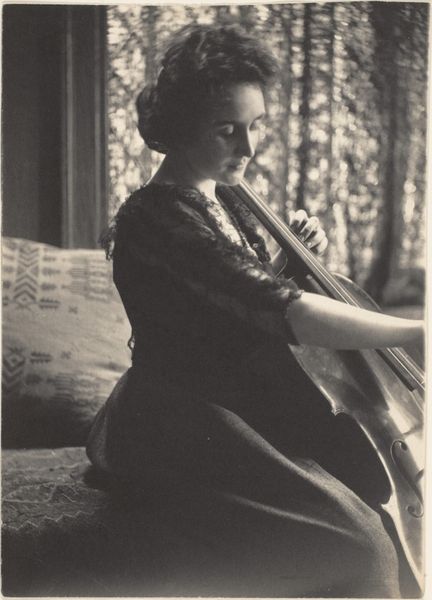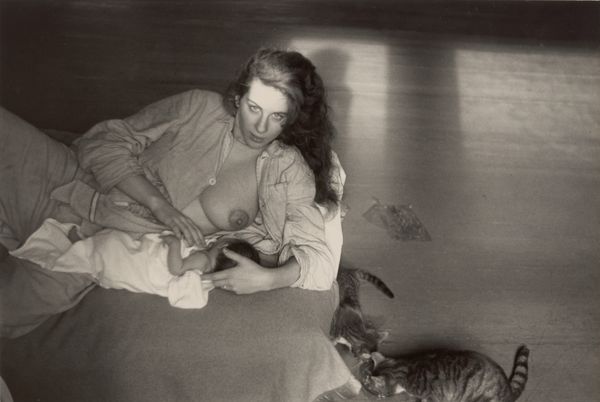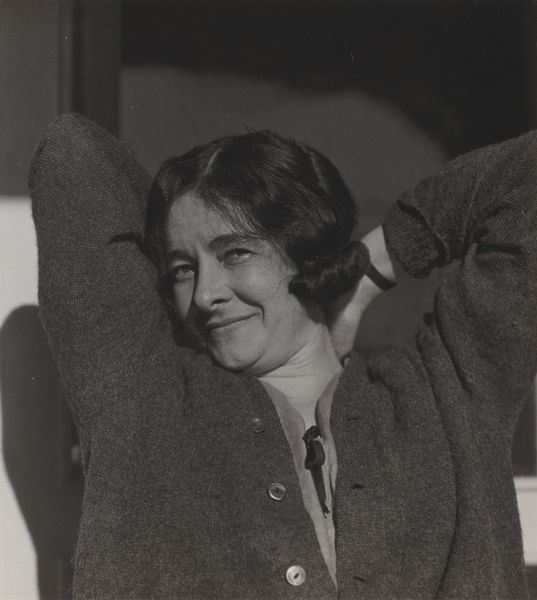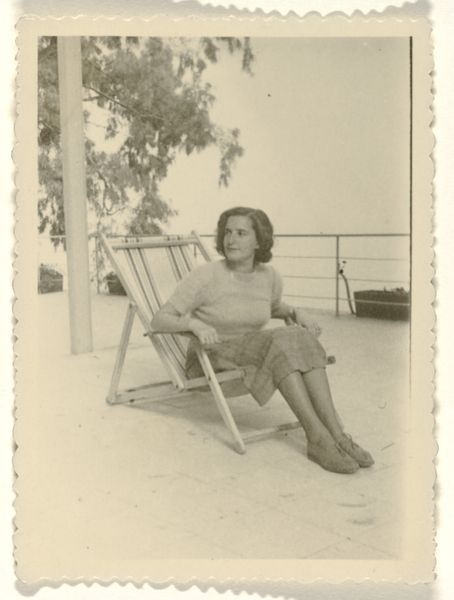
photography, gelatin-silver-print
#
portrait
#
print photography
#
archive photography
#
photography
#
historical photography
#
gelatin-silver-print
Dimensions: height 100 mm, width 150 mm
Copyright: Rijks Museum: Open Domain
This small, anonymous photograph from the Estate of Isabel Wachenheimer is intriguing. It shows a young woman in bed, writing or drawing with a fountain pen. What strikes me most is the intimacy of the scene. The soft light, the comfortable setting, and her focused expression invite us into a private moment of creation. I love how the black and white tones emphasize the textures: the crispness of the paper, the softness of the bedding, the smooth barrel of the pen. Notice how the diagonal of the writing board cuts across the frame, creating a dynamic tension. It's like a barrier, separating her inner world from our gaze, yet also a bridge, inviting us to imagine what she’s creating. This image reminds me of other artists who have explored themes of domesticity and self-reflection, like Édouard Vuillard or even Agnes Martin. It’s a reminder that art can be found in the everyday, in the quiet moments of observation and expression.
Comments
rijksmuseum about 2 years ago
⋮
Isabel Wachenheimer still signed with her concentration camp number, ‘K.Z. häftling No 918’ three months after she was liberated. Just see the inscription on the back of a portrait photograph of her taken on 25 September 1945. Isabel was a broken person after the war. She slowly recuperated from a fractured vertebra in Davos (Switzerland). In November 1946 Isabel married Leo Blumensohn, a fellow victim she met in the Westerbork transit camp.
Join the conversation
Join millions of artists and users on Artera today and experience the ultimate creative platform.

